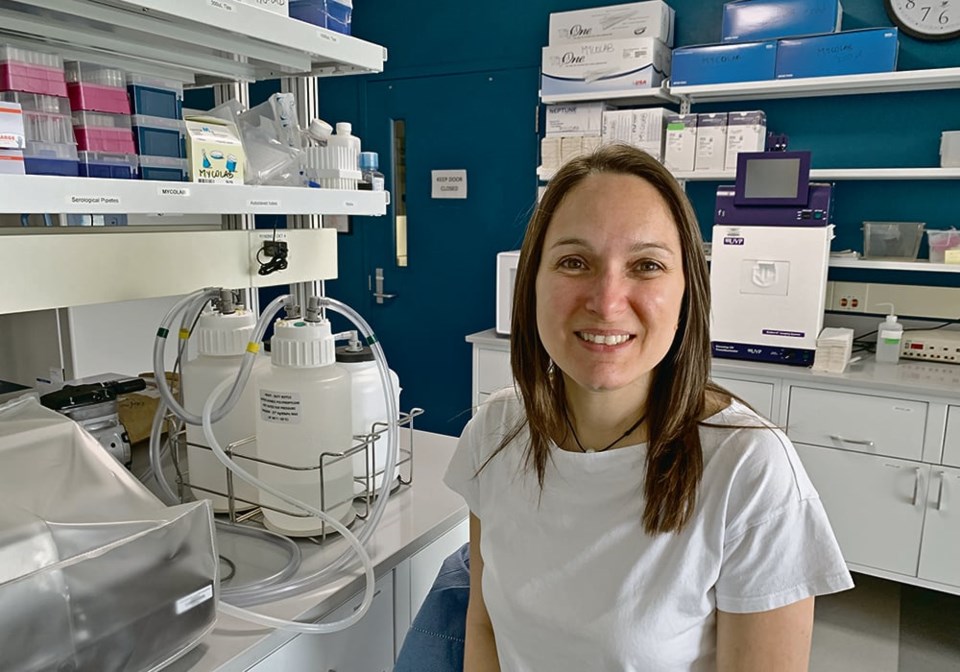ST. PAUL, Minn. — Sometimes the best way to achieve big goals is by addressing lots of small questions.
That’s the approach the Swine Disease Eradication Center at the University of Minnesota has taken with tackling the diseases that sicken millions of North American pigs and cost hog farmers and the pork industry billions of dollars per year.
On a busy summer day at the centre, located inside the building that houses the state veterinary college and on the agricultural campus in St. Paul, centre director Maria Pieters is working with graduate students in agriculture and veterinary science, as well as preparing research plans for future projects. The centre’s focus on eradicating swine diseases is becoming increasingly relevant after a major shift in the hog industry’s approach to diseases like mycoplasma and porcine epidemic diarrhea virus.
“The ones pushing for the elimination programs are (producers,) in their farms, in their production systems,” said Pieters, who has been with the SDEC for 19 years.
“In the past, it’s been about control, like ‘let’s control it this way, let’s control it that way.’”
Most farmers accepted the endemic nature of some common diseases and, with their veterinarians’ advice, developed ways to manage disease-positive herds. However, farmers have found that living with these diseases is worse than undergoing the intense efforts required for elimination.
The centre focuses on applied science, using the expertise it has in the animal science and veterinary departments to undertake barn-applicable studies. It runs what Pieters refers to as pilot studies for promising approaches, hoping to answer specific questions.
For example, researchers might look at what common barn materials are the worst for harbouring swine diseases and allowing them to linger inside a barn.
If something seems to work, the knowledge is passed on to the centre’s partners and funders in the commercial hog industry, including Canada’s Demeter Veterinary Services.
The centre has meetings with hog producers, publishes several newsletters and sources of information, and now offers a podcast called Processing the Litter-ature.
The dreaded PRRS virus was first spotted in Minnesota, so the centre has long experience with a disease that has become a chronic drain on North American hog management and profitability.
Respiratory diseases like PRRS have been a focus, but other diseases like PED have also been tackled. The goal of eradicating PED, which is also being undertaken in Manitoba, was once unthinkable. Most people in the industry considered it endemic. But ongoing costs of PED plus good experience with eliminating mycoplasma have caused producers and veterinarians to reverse course.
One commercial operator, with barns in four American states, decided to rid mycoplasma from its system of 62,000 sows. It now has only one infected facility left.
The Pipestone veterinary network eliminated 85 percent of its mycoplasma infections by last year.
Huge producers like Smithfield and Seaboard Foods have joined the effort.
The SDEC doesn’t have a huge amount of funding, so it focuses where it can make the biggest impact. Pieters said it hasn’t delved deeply into African swine fever research, despite the widespread concern about the as-yet-unarrived disease, because there are multiple other research centres putting their resources into combatting that menace.
“We cannot make a dent,” said Pieters.
Researchers are keeping a close eye on another menace from the north and south: wild pigs. Feral pigs from the southern United States and wild pigs from Canada are encroaching on Minnesota and the central Midwest, so assessing their disease threat is important.
“What do they carry? What are the agents?” said Pieters.
As living, biological entities, diseases are always changing, giving researchers a never-ending challenge. PRRS, for instance, develops a damaging new strain every four to seven years. For whatever else the hog industry is dealing with, whenever a new strain hits, the pressure becomes extreme.
“PRRS changes the intensity every four years,” said Pieters.
There are also unexpected developments that demand attention within the veterinary complex at the university. On this morning at the centre, news has come in that a truckload of pigs has overturned on a busy interstate highway and pigs are running up and down along a Minneapolis-area freeway.
At one time, pig diseases were a secondary issue in an industry focused on nutrition management and carcass quality. But in recent decades, with bigger barns and more intense disease pressure, pig health has become the number one management concern in virtually all hog production systems.
There have been many advances in disease control, but the fight against evolving pathogens scrambles to keep up with challenges.
With ASF knocking at North America’s doors and wild pigs infiltrating major production regions, the threats are growing, not declining.
“As of now, biosecurity has to become even higher,” said Pieters.
That means swine disease eradication has proven itself to be possible, to be worthwhile, but also to be something the hog industry will need to embrace for the long run. The threats aren’t going away.
You can no longer count on social media to deliver important news to you. Keep your news a touch away by bookmarking SASKTODAY.ca's homepage at this link.
Subscribe to SASKTODAY.ca newsletter to get our daily news to your inbox.



